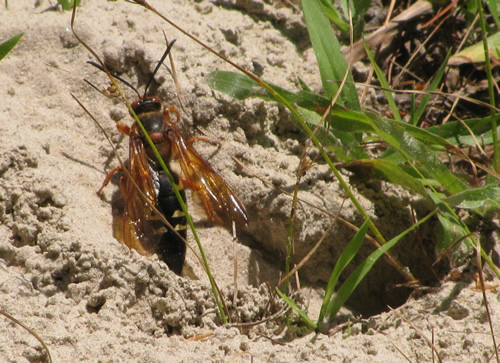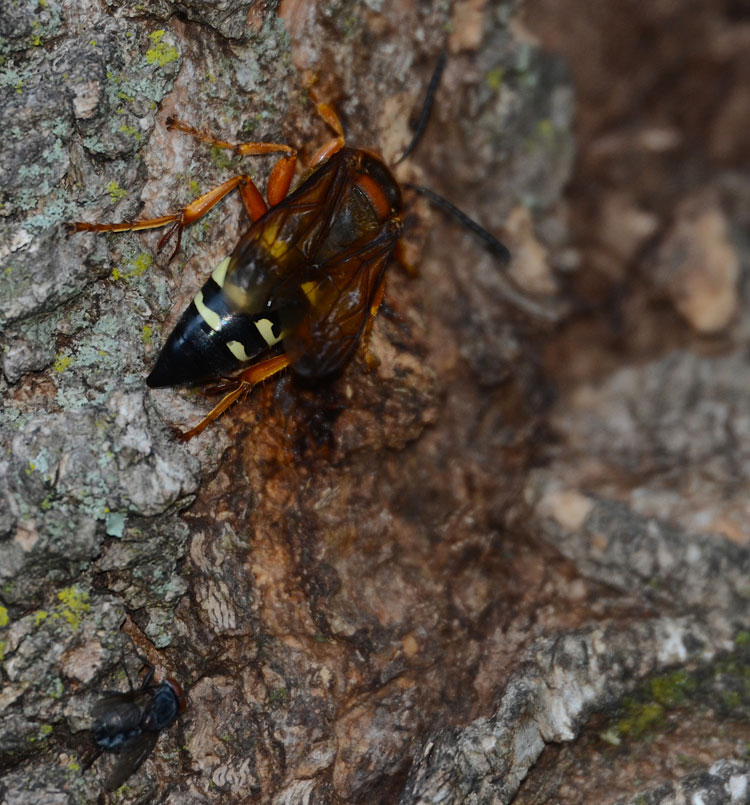

She uses her stinger to subdue and paralyze a cicada, so she can fly with it back to her nest, drag it into the hole, down into the burrow and lay an egg on its body. Biology and Behaviorįemale cicada killers possess a large, visible stinger, which is a modified egg-laying device. When female wasps locate a favorable location, nesting aggregations form, so it is common to have many nests in a small area, yet each burrow is nest to a single wasp. They live on their own, excavating a burrow in which to provision with prey and to lay their eggs upon. They are considered solitary because they do not live in large colonies and collectively feed and care for multiple individuals. Their abdomen appears hairless, black and marked with bright, bold yellow patterns (usually three broken bands). They have large, rust-colored eyes, wings, legs and antennae.

Of the solitary wasps, the cicada killer is the largest species in Nebraska, reaching lengths from 1½–2 inches. The damage to yards, landscapes and gardens are often more of an aesthetic problem than the health hazards of the wasp itself. Cicada killer wasps can be considered scary, but they seldom sting. Some individuals suffer adverse reactions to wasp venom similar to the anaphylactic response to a bee sting. The sight of a wasp frightens people and rightly so. July and August is stinging insect season in Nebraska.

The Largest Wasp in Nebraska: Cicada Killer


 0 kommentar(er)
0 kommentar(er)
